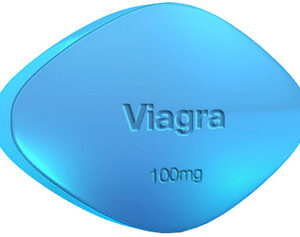Indications
Cialis, also known by its generic name, tadalafil, is a prescription medication primarily used for the treatment of erectile dysfunction (ED) in men. It is also indicated for the management of the signs and symptoms of benign prostatic hyperplasia (BPH) and is approved for the treatment of both conditions concurrently when applicable. Additionally, Cialis is utilized in the therapeutic regimen for pulmonary arterial hypertension (PAH) under the brand name Adcirca to improve exercise capacity.
Dosage and Administration of Cialis
The dosage and administration of Cialis vary depending on the condition being treated.
Erectile Dysfunction (ED):
- Starting Dose: The recommended starting dose for managing ED is 10 mg taken orally prior to anticipated sexual activity.
- Adjustment: Depending on the individual’s response and tolerability, the dose may be adjusted between 5 mg to 20 mg.
- Maintenance Dose: A maintenance dose within the range of 5 mg to 20 mg can be taken as needed.
- Daily Use: For daily use, a lower dose of 2.5 mg to 5 mg is recommended, regardless of sexual activity timing.
| Condition/Use | Starting Dose | Adjustment Range | Maintenance Dose | Daily Use Dose | Time of Administration |
|---|---|---|---|---|---|
| Erectile Dysfunction | 10 mg | 5 mg to 20 mg | 5 mg to 20 mg | 2.5 mg to 5 mg | Prior to sexual activity |
| Benign Prostatic Hyperplasia (BPH) | 5 mg | N/A | N/A | N/A | Daily, at approximately the same time |
| Pulmonary Arterial Hypertension (PAH) | N/A | N/A | N/A | N/A | Once daily |
Note: The dosages mentioned are general guidelines and may vary based on individual patient factors. It’s crucial to follow the specific dosage instructions provided by a healthcare professional.
Administration Instructions:
- Cialis tablets should be taken whole, without splitting, crushing, or chewing.
- It can be taken with or without food.
- It is recommended to take Cialis at least 30 minutes before anticipated sexual activity for ED treatment.
- For daily use, Cialis can be taken at the same time each day, regardless of sexual activity timing.
- Patients should follow their healthcare provider’s instructions regarding dosage adjustments and administration.
Contraindicated Circumstances
Cialis is contraindicated in patients who are using any form of organic nitrate, either regularly or intermittently, due to the risk of developing potentially life-threatening hypotension. Patients with known hypersensitivity to tadalafil or any component of the tablet should avoid using Cialis. It is also contraindicated in individuals who have been advised against sexual activity due to cardiovascular status.
Cautions
Caution is advised when prescribing Cialis to patients with a history of cardiovascular disease, as sexual activity carries a potential risk to individuals with heart problems. Precaution is also necessary for patients with the following conditions: pulmonary veno-occlusive disease, renal or hepatic impairment, retinitis pigmentosa, history of priapism, or conditions predisposing them to priapism. It is pertinent to warn patients about the potential for erections lasting longer than 4 hours, and the necessity of seeking immediate medical assistance for such occurrences.
Negative Reactions
Common negative reactions to Cialis include, but are not limited to, headaches, dyspepsia, back pain, nasal congestion, flushing, and myalgia. In some instances, patients may experience changes in color vision, sudden decrease or loss of hearing, or ringing in the ears. More severe adverse effects may manifest as cardiovascular events such as stroke, myocardial infarction, or palpitations, although these are rare.
Drug Interactions
Medications that interact with Cialis include nitrates, alpha-blockers, antihypertensives, potent inhibitors of cytochrome P450 (CYP) 3A4 such as ketoconazole or ritonavir, and other treatments for ED. It’s crucial to evaluate patients for potential drug interactions and to adjust dosing or usage accordingly.
Special Populations
Use of Cialis in special populations requires careful consideration. For pediatric patients, the safety and efficacy of Cialis has not been established. In elderly patients, dose adjustments are not required, although they may experience heightened sensitivity to the medication. For those with renal or hepatic impairment, a lower starting dose may be necessary to mitigate the risk of adverse effects. Cialis should not be used in pregnant women unless clearly needed, and caution should be exercised when Cialis is administered to nursing women.
Overdose Management
Overdose symptoms can include an increase in the drug’s known adverse effects. In the event of an overdose, standard supportive measures should be adopted as required. Hemodialysis contributes negligibly to tadalafil elimination; therefore, this may not be a viable treatment option in cases of Cialis overdose.
Pharmacological Profile
Cialis functions by inhibiting phosphodiesterase type 5 (PDE5), which is found in various tissues, including the corpus cavernosum of the penis. Its pharmacological effect is more selective on PDE5 than on other known phosphodiesterases. The inhibition of PDE5 results in increased corpus cavernosal smooth muscle relaxation, leading to increased blood flow and an erection in the presence of sexual stimulation. The onset of medication activity may begin within 30 minutes post-dose and extend for up to 36 hours.
Supply and Storage
Cialis is supplied in various strengths, including 2.5 mg, 5 mg, 10 mg, and 20 mg tablets. Tablets should be stored at room temperature, between 15-30°C (59-86°F), protected from moisture and heat. Dispense in tight, light-resistant containers.





Kevin (verified owner) –
Quick delivery, high-quality meds. Worth the cost.